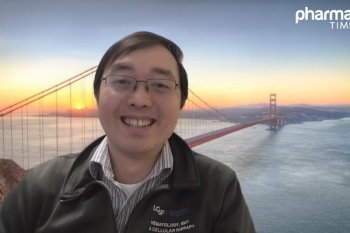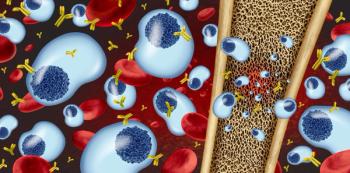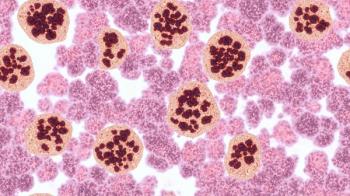
Novel Agents, Promising Data: The Evolving Landscape of Oncology Care
Key Takeaways
- Tarlatamab, a bispecific T-cell engager, shows promise in small cell lung cancer with a 40% response rate and manageable cytokine release syndrome.
- Epcoritamab, targeting CD3 and CD20, offers an off-the-shelf option for follicular lymphoma, with an 82% response rate and reduced toxicity in optimized dosing.
Groundbreaking oncology drugs transform treatment for glioblastoma, HR+ breast cancer, and small cell lung cancer.
Oncology research and drug development continue to adapt and change as clinical understanding of cancer, its presentations, underlying biology, and treatment responses evolve. At the 2025 ASCO Annual Meeting, experts discussed key drug approvals and agents—sharing insights about incorporation of novel cancer treatments and practical applications.
In 2024, the FDA approved 15 novel cancer drugs and 39 new or expanded indications for previously approved agents, highlighting the significant advancements made in recent years. Notable drugs such as tarlatamab (Imdelltra; Amgen Inc), epcoritamab (Epkinly; Genmab, AbbVie), datopotamab deruxtecan (Dato-DXd, Datroway; AstraZeneca, Daiichi Sankyo), and vorasidenib (Voranigo; Servier Pharmaceuticals LLC), have greatly improved outcomes for patients across cancer types, such as breast, lung, and brain cancer. Not only have they demonstrated improvements in efficacy and survival, but manageable and tolerable safety profiles.1
Tarlatamab For Small Cell Lung Cancer
Tarlatamab is a first-in-class bispecific T-cell engager (BiTE) that binds to DLL3 tumor cells and CD3 T-cells, to kill DLL3-expressing small cell lung cancer (SCLC). A unique characteristic of the agent is its ability to activate T-cells without requiring antigen presentation, which is often downregulated in SCLC.2
Tarlatamab’s FDA accelerated approval was based on clinically meaningful data from the DeLLphi-301 (NCT05060016) trial, an open-label, multicenter, multi-cohort study. The trial data revealed a 40% response rate with a progression-free survival (PFS) around 4.3 months. Additionally, survival outcomes were very promising and exceeded approximately 20 to 50 months.2,3
“This BiTE is composed of immunoglobulin-derived portions that bind to CD3 and DLL3, connected by a flexible linker. It also includes an FC region, which is an inactive component added to extend the drug’s half-life.” explained Luis G. Paz-Ares, MD, PhD, from the Hospital Universitario 12 de Octubre in Madrid, Spain.1
Like other agents, tarlatamab is strongly associated with cytokine release syndrome (CRS) and immune effector cell-associated neurotoxicity syndrome (ICANS), particularly in the first 2 cycles of therapy.1
CRS occurs in approximately 50% of patients receiving tarlatamab, typically grades 1 (fever), 2 (hypotension with mild oxygen needs), and 3 (hypotension requiring vasopressors with high oxygen flow) AEs. These happen within the first 3 infusions but typically resolve in 3 to 4 days, suggesting the manageable safety profile of tarlatamab in relation to CRS. Recommended approaches for managing CRS, depending on the grade, can include monitoring blood pressure and temperature, providing fluids for hydration, administering antibiotics, utilizing dexamethasone, alongside opportunities for use of tocilizumab (Actemra; Genentech), especially for grade 2 to 3 CRS. In severe cases, there may be a potential need for intensive care unit transfer.1
Compared with CRS, ICANs occurs less frequently—with an incidence of around 10% among patients receiving tarlatamab. When it does occur, it is typically low grade (grade 1 or 2); however, symptoms can persist for up to two weeks and most commonly emerge 4 to 5 days after infusion. Given this delayed onset and potential duration, proactive management is essential.1
Successful mitigation of ICANs hinges on a coordinated, expert multidisciplinary team capable of rapid response. Rigorous patient monitoring allows for early detection of neurologic symptoms, and prompt intervention can help prevent escalation to more severe toxicity. A tailored treatment approach, based on each patient’s clinical status and risk factors, further supports optimal outcomes and enhances the safety profile of tarlatamab therapy. These protocols are also applicable to CRS mitigation and management.1
Epcoritamab For Follicular Lymphoma
Epcoritamab is another BiTE that targets CD3 on healthy T-cells and CD20 on malignant B cells, facilitating T-cell–mediated apoptosis. Unlike traditional monoclonal antibodies, epcoritamab binds to a unique epitope on CD20, distinguishing it from agents such as rituximab and potentially enhancing its efficacy in some B-cell malignancies. One of the major advantages of epcoritamab is its off-the-shelf availability, offering a more convenient and timely treatment option compared with therapies like chimeric antigen receptor (CAR) T-cell therapy, which require individualized cell manufacturing.1
“It can be administered either previously or more recently as an off-the-shelf therapy, since we don’t have to manufacture it like we do with CAR T-cells. That makes the timing much easier for patients and more consistent, as there’s no delay due to manufacturing,” said Julie Vose, MD, MBA, FASCO, University of Nebraska Medical Center.1
In 2023, the FDA granted epcoritamab accelerated approval for the treatment of relapsed or refractory diffuse large B-cell lymphoma, not otherwise specified—including DLBCL arising from indolent lymphoma—and high-grade B-cell lymphoma, in patients who have received 2 or more prior lines of systemic therapy. This decision was supported by positive findings from the EPCORE NHL-1 trial (NCT03625037).4,5
EPCORE NHL-1 is a phase 1/2, open-label trial designed to evaluate epcoritamab's safety and efficacy in 128 patients with DLBCL and relapsed/refractory follicular lymphoma (R/R FL). The study was conducted in 2 cohorts: the original cohort and an optimization cohort, which was added to reduce toxicity and improve outpatient treatment potential. In this educational session, Vose focused on data from patients with R/R FL.1,4
In the original cohort of patients receiving the drug, treatment yielded an overall response rate of 82%, with 63% of patients achieving a complete response. However, this group experienced relatively high rates of CRS and neurologic toxicity.1
To address these concerns and improve the feasibility of outpatient administration, an optimization cohort was introduced. This cohort implemented additional step-up dosing strategies, incorporated dexamethasone for symptom management, and provided intravenous hydration to mitigate adverse effects. These adjustments led to a reduction in CRS events from 65% to 49%, and notably, no grade 3 CRS events were reported in the optimization cohort.1
Dato-DXd For Breast Cancer
Dato-DXd is a Trop-2-directed antibody drug conjugate (ADCs) and topoisomerase inhibitor conjugate comprised of a humanized IgG1 monoclonal antibody that attaches to topoisomerase 1 inhibitor payloads through tumor-selective cleavable linkers. Trop 2 is a protein that is overexpressed in many cancer types and is associated with cancer cell proliferation, invasion, and survival. In hormone receptor-positive (HR+) breast cancers, Trop2 is detected in 50% to 60% of all cases.1,6
Dato-DXd was approved in January 2025 for adult patients with unresectable or metastatic, HR+, human epidermal growth factor receptor 2-negative (HER2) BC who have received prior endocrine-based therapy and chemotherapy. This decision was based on data from the phase 3 randomized Tropion-Breast 01 trial (NCT05104866) compared Dato-DXd with investigator’s choice chemotherapy. Although overall survival was not met, the data showed statistically significant improvements in PFS of 6.9 months versus 4.9 months in chemotherapy arm with an 82% overall response rate.6,7
Despite its efficacy, Dato-DXd is associated with AEs, namely oral mucositis and ocular surface events. Oral mucositis occurred in approximately 50% of patients, though most cases were grade 1 or 2. Prophylactic use of steroid mouthwash is recommended to help prevent or lessen this side effect. Ocular surface events were reported in about 44% of patients, for which the use of artificial tears is advised. This treatment is generally recommended for patients who are no longer candidates for endocrine therapy and who have received at least one prior line of chemotherapy for metastatic disease.1
"In terms of prophylaxis, it is essential to use a steroid-containing mouthwash several times per day, starting with the initiation of treatment with Dato-DXd,” explained Barbara Pistilli, MD, from Gustave Roussy in Villejuif, France. “Prophylactic cryotherapy—such as holding ice chips or ice water in the mouth during drug administration—is also recommended.”1
Pistilli also stressed the importance of educating patients about supportive care strategies as key to maximizing tolerability and minimizing complications associated with treatment. Involving patients early and consistently in their care plan helps reinforce adherence and promotes better outcomes.1
“Patient education is very important—particularly regarding the avoidance of alcohol and tobacco, understanding the importance of adhering to preventive measures, and the need for self-monitoring of oral health,” Pistilli said.1
Vorasidenib For Glioblastoma
Vorasidenib is a dual inhibitor of the mutant IDH1 and IDH2 enzymes that is highly brain-penetrant and selective when taken orally. About 20% of patients with primary malignant brain tumors with adult-type diffuse gliomas have an IDH mutation; this includes 100% of patients with grades 2 and 3 adult-type diffuse gliomas. Vorasidenib represents the first FDA approved targeted therapy for these mutations, moving the needle for the standard of care—which hasn’t changed for 20 years. The agent allows for a potential "watchful waiting" approach instead of immediate radiation or chemotherapy.1,8
Vorasidenib’s approval for adult and pediatric patients 12 years and older with grade 2 astrocytoma or oligodendroglioma was based on data from the INDIGO trial (NCT04164901). Not only did vorasidenib prolong positive PFS and time to next intervention (TTNI) data, it also gradually reduced tumor volume over time and preserved neurocognitive function.1,9
At a median follow-up of 14.2 months, 68.3% of patients remained on treatment with either vorasidenib or placebo. The investigators reported a median PFS of 27.7 months compared with 11.1 months for those on placebo. Time to next intervention also significantly favored vorasidenib, though it was not reached in the treatment arm, compared with 17.8 months in the placebo group. Furthermore, patients treated with vorasidenib experienced a gradual reduction in tumor volume, with an average decrease of 2.5% every 6 months.1,8
As cancer research continues to drive innovation, next-generation therapies are reshaping standards of care across tumor types. As oncologists and oncology pharmacists integrate these new agents into practice, the focus remains on optimizing outcomes while preserving quality of life.
REFERENCES
1. Mellinghoff I, Pegram M, Paz-Ares L, et al. New drugs in oncology: Incorporation into practice. 2025 ASCO Annual Meeting. May 30, 2025, to June 3, 2025. Chicago, IL.
2. The FDA grants accelerated approval to tarlatamab-dlle in small cell lung cancer. Pharmacy Times. May 17, 2024. Accessed May 30, 2025. https://www.pharmacytimes.com/view/the-fda-grants-accelerated-approval-to-tarlatamab-dlle-in-small-cell-lung-cancer
3. A phase 2 study of tarlatamab in patients with small cell lung cancer (SCLC) (DeLLphi-301). Updated May 2, 2025. Accessed May 30, 2025. https://clinicaltrials.gov/study/NCT05060016
4. Epcoritamab-bysp yields long-term disease remission in patients with relapsed, refractory large B-cell lymphoma. Pharmacy Times. May 29, 2025. Accessed May 30, 2025. https://www.pharmacytimes.com/view/epcoritamab-bysp-yields-long-term-disease-remission-in-patients-with-relapsed-refractory-large-b-cell-lymphoma
5. First-in-human (FIH) trial in patients with relapsed, progressive or refractory b-cell lymphoma (EPCORE™ NHL-1). Updated May 8, 2025. Accessed May 28, 2025. https://clinicaltrials.gov/study/NCT03625037
6. FDA approves Dato-DXd for adults with unresectable or metastatic HR+, HER2- breast cancer. Pharmacy Times. January 17, 2025. Accessed May 30, 2025. https://www.pharmacytimes.com/view/fda-approves-dato-dxd-for-adults-with-unresectable-or-metastatic-hr-her2--breast-cancer
7. A Phase-3, Open-Label, Randomized Study of Dato-DXd Versus Investigator's Choice of Chemotherapy (ICC) in Participants With Inoperable or Metastatic HR-Positive, HER2-Negative Breast Cancer Who Have Been Treated With One or Two Prior Lines of Systemic Chemotherapy (TROPION-Breast01). ClinicalTrials.gov identifier: NCT05104866. November 21, 2024. Accessed January 17, 2025. https://www.clinicaltrials.gov/study/NCT05104866
8. FDA approves vorasidenib for adults, pediatric patients with grade 2 astrocytoma, oligodendroglioma. Pharmacy Times. August 7, 2024. Accessed May 30, 2025. https://www.pharmacytimes.com/view/fda-approves-vorasidenib-for-adults-pediatric-patients-with-grade-2-astrocytoma-oligodendroglioma
9. Study of Vorasidenib (AG-881) in Participants With Residual or Recurrent Grade 2 Glioma With an IDH1 or IDH2 Mutation (INDIGO). Updated December 5, 2023. Accessed August 7, 2024. https://clinicaltrials.gov/study/NCT04164901
Newsletter
Stay informed on drug updates, treatment guidelines, and pharmacy practice trends—subscribe to Pharmacy Times for weekly clinical insights.




















































































































































































































